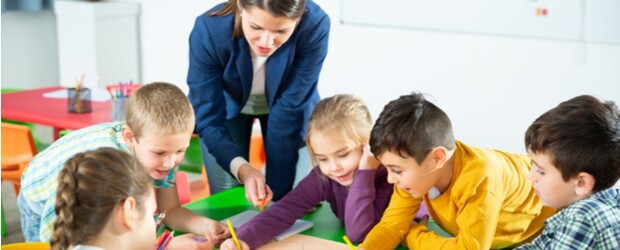A growth mindset was first conceptualized by Stanford University Psychology professor, Dr. Carol Dweck. Dweck noticed, when she was a young researcher, that there were two mindsets people held about themselves when it came to their problem-solving abilities: a fixed mindset or a growth mindset.1
While the fixed mindset concept holds that people are born with their abilities and cannot develop them because intelligence is static, a growth mindset believes that learners can grow and cultivate their abilities through persistence and effort.1
Dweck’s work on these groundbreaking concepts brought them to mainstream education theory and is covered, in-depth, in her 2006 book titled “Mindset: The New Psychology of Success.”2 Importantly, Dweck’s writings show how these two mindsets have the potential to affect students’ learning approaches, and how, in turn, having a certain approach can affect long-term outcomes for students.3
Read on to learn how you can build a growth mindset in your own classrooms and how doing so creates a more positive learning environment that can help your students.
The Benefits of a Growth Mindset in the Classroom
According to Dweck’s decades-long research in child development, motivation, and intelligence, people that hold a growth mindset will feel that mistakes are part of the learning process and will be more positive about failure than their fixed mindset counterparts.3 They will also view challenges as exciting and will look forward to working harder to achieve their best.3,4
Roughly 40% of students have a growth mindset, versus 40% who have a fixed mindset and 20% who show characteristics of both.4
Because growth mindset students believe that hard work is part of a beneficial process that can deliver beneficial results, setbacks don’t derail them from working towards their goals and they find it easier to enjoy the learning process and school.
On the other hand, those with fixed mindsets view setbacks as proof of their inability to succeed, see their efforts as a waste of time, and have negative emotions around failure because they believe it means they aren’t smart or talented.3 Fixed mindset students tend to avoid challenges, give up more easily, and can even be intimidated by the success of others.3
Therefore, it’s important that classrooms have a growth mindset to help students:
- Achieve more in the classroom
- Prioritize learning and learning experiences over success/failure outcomes
- Increase their happiness and satisfaction
- Close the achievement gap
- Reverse falling grades
- Remain resilient during the learning process
- Learn from feedback, not avoid or ignore it3
It’s also been found that having a growth mindset in classrooms helps diverse learners and under-resourced students making it an especially useful pedagogical approach in communities that have diverse learners and/or funding and resource needs.4
How to Implement a Growth Mindset
Here is a quick list of steps you can take, and actions you can avoid, to introduce growth mind concepts to your classrooms. Doing some steps and eliminating others will help your students adopt a more positive learning outlook and grow academically:
Do:
- Compliment students on their process and progress
- Encourage students to embrace challenges
- Talk to parents about growth mindset, share growth mindset examples they can use at home
- Introduce new challenges to engage all students of all abilities
- Have all students share their efforts and progress as a class
- Help students work through setbacks/failures and remain persistent
- Provide useful feedback and encouragement to keep students aware of their progress and help them to continue to work towards their goals
Don't:
- Focus on grades, scores, outcomes, pass/fail results
- Praise a student’s IQ level, current abilities, grades over progress/effort
- Allow students to avoid challenges or perform for praise
- Create a competitive classroom environment with “winners” and “losers”
- Let students criticize themselves and others
- Let students give up, accept “defeat”
- Criticize students during feedback instead of offering positive critiques
Creating a learning environment that emphasizes a growth mindset over a fixed mindset will encourage your students to remain resilient in the face of challenges so they can reach their full potentials—no matter their existing skills or abilities.
Gain the skills to create positive learning environments for all learners.
With a top-ranked degree from the University of Kansas School of Education and Human Sciences, you’ll advance your career and make a positive impact in education. Learn to engage students of all ages in our Department of Curriculum and Teaching, share your gifts with students with disabilities in our Department of Special Education, or keep motivation strong in instructional teams in our Department of Educational Leadership and Policy Studies. We offer online master’s degrees, graduate certificates and licensure endorsement programs. Our admissions advisors are here to answer your questions. Get in touch with us today.
- Retrieved on October 27, 2021, from theatlantic.com/education/archive/2016/12/how-praise-became-a-consolation-prize/510845/
- Retrieved on October 27, 2021, from books.google.com/books/about/Mindset.html?id=fT6U0Ee7_kQC&source=kp_book_description
- Retrieved on October 27, 2021, from themarginalian.org/2014/01/29/carol-dweck-mindset/
- Retrieved on October 27, 2021, from waterford.org/education/growth-mindset-in-education/


